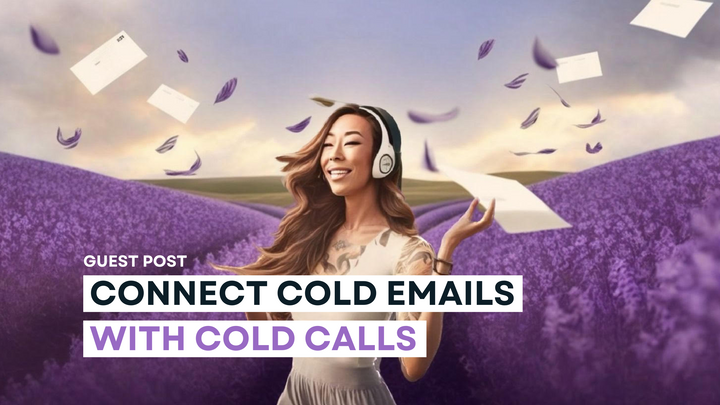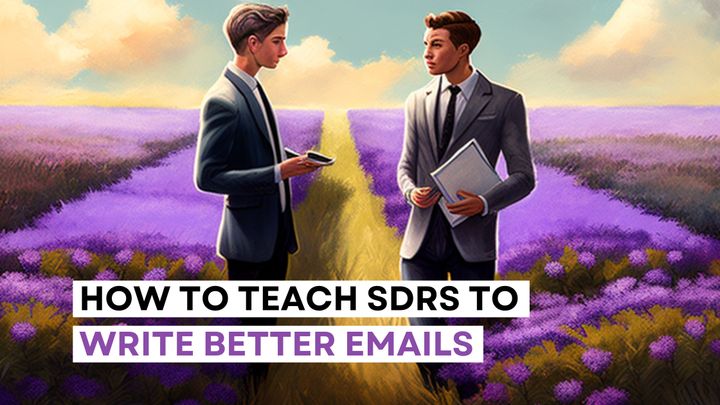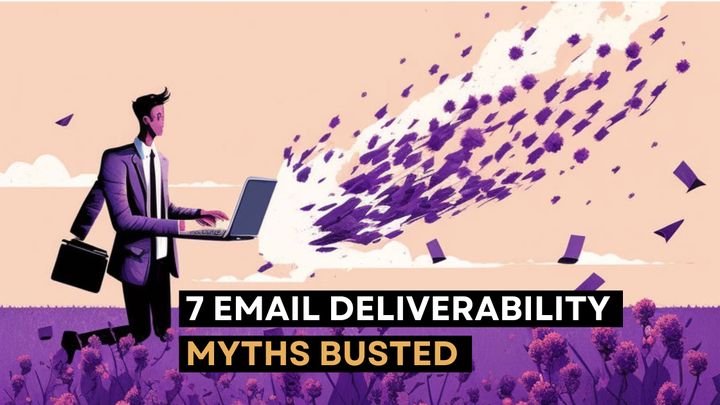Scaling Outbound: Building a Sustainable Foundation for Success
Scaling outbound sales effectively and efficiently? Easier said than done. Here are three steps to scale in a way that works.

Nearly every SaaS company has some form of an outbound team, so why is it still so hard to get outbound right?
I’ve been fortunate to build and lead some amazing outbound teams throughout my career. Along the way, I’ve seen a lot of the same themes. Now, as co-founder of a demand generation agency, I continue to help clients level up their outbound efforts.
I've built and led many SDR functions and now support clients in building theirs. Here are the top three challenges I consistently see teams struggle with and how to solve them.
1. Lack of personalization, leading to high email volume
Nearly every team I work with wants to do more personalization, but there's still that fear of putting all their eggs in one basket. I get it. It can feel like wasted time when you realize you could have fired off 30 generic emails in the same amount of time it took to write one personalized one.
But, the reality is that by personalizing even just 20% of the content in your email, you could increase your open rates by 40% and reply rates even more!
Robotically churning through cold emails is a slippery slope. The ability to tailor a message to its recipient keeps the SDR/BDR role strategic and a muscle that needs flexing. But the longer you go without doing so, the harder it gets.
When a program built solely on volume isn't seeing the results hoped for, the initial reaction is to, yup, increase the volume. And eventually, you hit a point of diminishing returns — literally and technically.
While there is no silver bullet, there is a middle ground. It's easier than you think to start personalizing your emails more.
Firstly, save yourself from needing to reinvent the wheel each time. Take your core, cold outbound sequence, and format it like the following structure and you don’t have to re-write the parts that are generally consistent.
A: Intro ("I'm reaching out because …")
B: Hook + Pitch (what your product does, and why that's relevant for them)
C: CTC (call to conversation, what you’re asking of them)
D: Closer (close with empathy, regardless of if they have any interest in a conversation)
Next, spend no more than five minutes researching your prospect and their company. By research, no, I do not mean you need to find a way of connecting the fact that they like to grill on Sundays to what your software does. You need to uncover what their priorities or goals are and how your product is relevant to that.
Here's my go-to personalization list:
- Recipient’s LinkedIn (content they’ve posted, engaged with, or featured on)
- Their company’s LinkedIn (recent announcements, ads, culture)
- Their website (product releases, careers page, pricing page)
- BuiltWith or ZoomInfo (technologies they’re using)
- Crunchbase (recent news and funding announcements)
- Recent content (blogs, podcasts, webinars)
- G2 reviews
- If they’re a public company, use their investor docs (e.g., a 10-K, a document summarizing the state of the company that public companies are required to publish once a year. At first, these can be intimidating to look at. Just skimming the first few pages will give you a great idea of their motivations or challenges. Here’s an example of Slack’s 10-K.)
- Your own experiences with their product
Bonus tip: Have a field in your CRM or sales automation tool to capture these notes, saving you time on future outreach to this prospect. Or use the Notes features in Lavender’s personalization assistant. :)
Then, spend no more than five minutes writing a one-sentence introduction that captures your reason for reaching out + your two-sentence pitch for how that's relevant to them.
Boom, you just wrote a more personalized email!
2. Impersonal and confusing messaging
One of the hardest parts of writing a strong outbound email is perspective. Your buyer may not use the same words you do to describe a product or problem. It can be impersonal or confusing when not speaking their language. Try to remove yourself from where you are and consider where your reader is. Make your message personal by showcasing your product's value for them and how it solves their problems.
But a good email message isn’t solely hinged on your value prop! In fact, it’s sometimes the last thing your recipients will read. A Nielson study found that most people don’t read online content linearly. Instead, most skim content using a variety of gaze patterns. The pattern I’ve found the most success with in cold emails is a clockwise pattern, where you anticipate recipients reading the components of your email as A-D-C-B.
This means they first read:
- Who you are
- Then, what you want
- Then, what you do
(Test this thinking on yourself next time you get an email!)
So introduce yourself in the first line, and make it clear what you do and what you’re asking them to do. This is why I love Lavender! It’s a great tool for helping craft a clear, succinct message that's easy for your reader to consume. Ultimately, it helps you become a better writer altogether.
I also recommend putting the time into developing one solid email sequence with messaging that is relevant but industry-agnostic. You can always leverage snippets where you find you’re repeatedly making the same adjustments.
Bear in mind, this isn't intended to be a 'set it and forget it.' I recommend coming back to give your messaging a facelift every quarter or two.
3. Bad domain health leading to poor deliverability
The message itself matters, but none of it matters if you don't have strong deliverability. And deliverability is a result of domain health.
Domain health tends to be an afterthought, but it really matters.
As Will Allred has said before, domain health is like a credit score — it's an accumulation of many different things, and it's hard to fix once it's been burned. Sending high volumes of cold emails through a sales automation platform is one of the worst things you can do to domain health.
Here's what you can do to safeguard your domain health (you may need to involve your IT team for some of these):
Firstly, check the current deliverability of your emails. This step will immediately give you a sense of what areas need fixing or where your domain may be blacklisted (*gasp*). It's okay if this happens to you. Some servers just have intense firewall protections, but all the more reason to send responsibly!
Use sites like:
You can also set up a CNAME. A CNAME is ‘short’ for 'Custom Tracking Domain’ (I know, it makes no sense to me either).
When you send emails through a sales automation platform, they typically track them through their default tracking domain (e.g., salesautomationplatform.com). This will likely be a different domain than you're sending from (salesrep@company.com). This mismatch of domains is a huge red flag for spam filters. Not to mention, each email is a 'ping,' and those pings add up (like we said, cumulative!).
I recommend setting up a Custom Tracking Domain (CNAME), which replaces their domain with yours, allowing your emails to be tracked without setting off alarm bells.
In general, tracking of opens and clicks mainly increases your email's chances of ending up in spam for similar reasons. There's less risk if you have a CNAME set up. But if you don't, and you're struggling with cold email deliverability, I suggest using these sparingly. Definitely turn off click tracking if you don't have any 'clickable' links worth tracking in your emails.
Confirm with your sales automation provider that you have a CNAME setup — they should be able to help you if you haven't.
Next, check your SPF / DKIM / DMARC. These are just fancy terms for making sure your recipients' email servers recognize your email as coming from a human, but they stand for:
- SPF (Sender Policy Framework)
- DKIM (Domain Keys Identified Mail)
- DMARC (Domain-based Authentication Reporting and Conformance)
Your IT team has probably already set these, but they typically need to be configured more from your sales automation platform. Ask your IT team and sales automation provider for more information — I'm a huge fan Salesloft's checklist for help with this.
Last but certainly not least, keep your hard bounce rate below 5%. A soft bounce is an email that initially fails due to something like the recipient's inbox being full. A hard bounce is when an email permanently fails due to the email address being incorrect or no longer active — and much more damaging to your domain (how is so much of email deliverability like a credit score?)
Outbound, it’s not easy — but it’s worth it. And if it's built on the right foundation, it will scale sustainably.
Author bio: Graceanne began her career in sales leading SDR/BDR teams, then worked in rev ops before landing in demand gen. She's now co-founder of Storybook Marketing, helping clients accelerate their growth.




